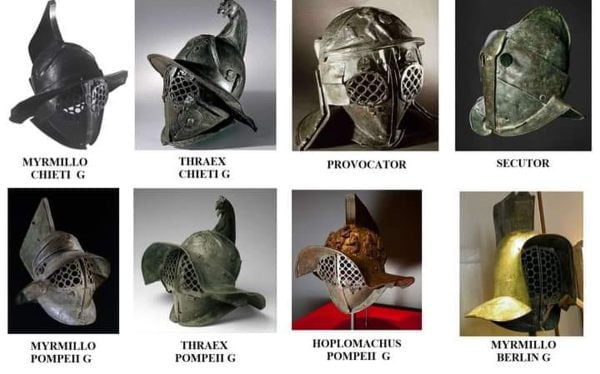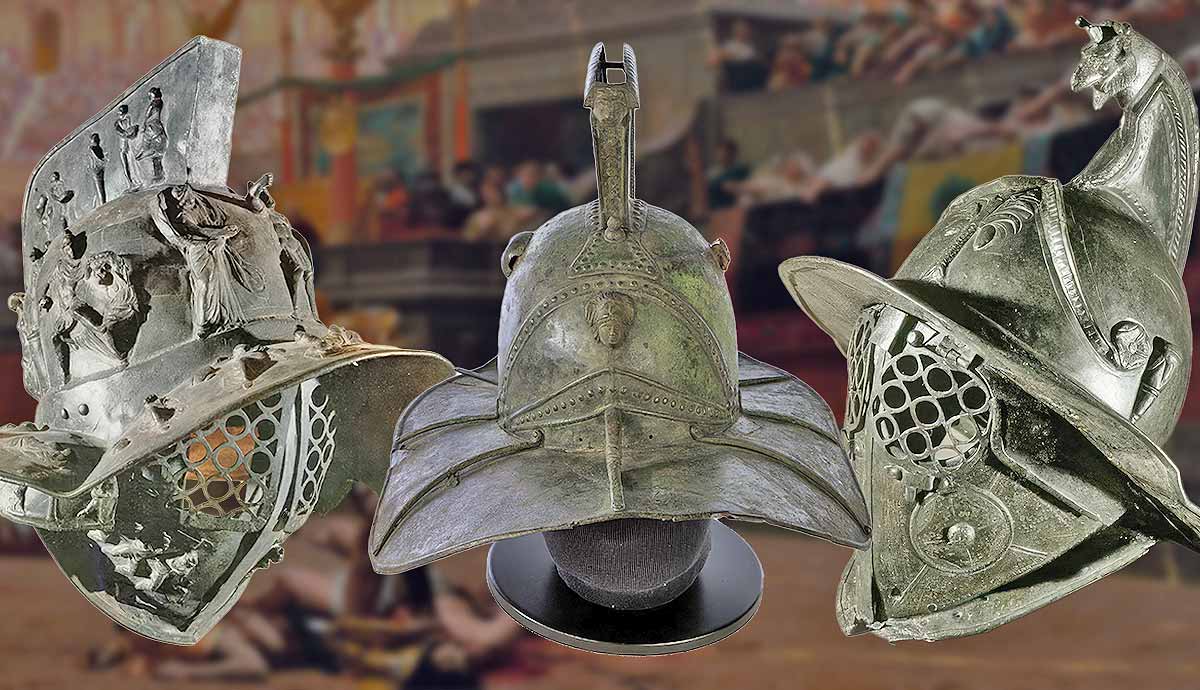Alright, so I've been diving into the world of gladiator helmets lately. Not like, physically diving, you know, but really getting into the nitty-gritty of what these guys wore on their heads. It all started when I was looking at some old prints I picked up ages ago, and I realized I couldn't really tell one helmet from another. They all just looked like "gladiator helmets" to me. So, I figured, let's sort this out.
My First Messy Look
My first step was just a broad sweep. I pulled out a few history books, hit up some online image searches – the usual stuff. And man, it was a jumble. So many different shapes! Some had big crests, others were super plain, some had these crazy face guards. I tried to make little notes, like "helmet with fish on top" or "helmet with holes." Not very scientific, I know, but it was a start. I was just trying to get a visual grasp of the variety.
Trying to Make Some Sense of It
After staring at pictures for a while, I started to see some patterns. I noticed some helmets seemed to show up more often in certain pairings in artwork, like when they depicted specific gladiator types fighting. That got me thinking, okay, maybe the helmet type is linked to the type of gladiator. That was a bit of an "aha!" moment, even if it seems obvious now.

So, I began to group them based on what I was reading about the gladiators themselves. For instance, I kept seeing mentions of the Myrmillo. Their helmets, I learned, often had that distinctive, broad brim and a big, often angular crest, sometimes looking like a fish fin. They also had a visor with grille-like openings. I started to pick those out from the crowd of images.
Digging Deeper into Specific Types
Then there was the Thraex, or Thracian. This one often got confused with the Myrmillo in my initial attempts because it also had a crest. But then I noticed the key difference: the Thraex helmet often had a griffin's head as a protome on the crest, or at least that's what many sources pointed to. And the visor, while also a grille, sometimes seemed to have more openings or a different style. It was subtle, but the griffin became my main clue for these guys.
The Secutor helmet was another one that stood out once I knew what to look for. These were really distinctive because they were so smooth and round. Almost like a minimalist design compared to the others. They had very small eyeholes. I read that this was to protect them against the trident of the Retiarius, their usual opponent. The smooth surface was supposed to make the trident glance off. That made a lot of sense, seeing the design in context of who they fought.
I also came across the Provocator. Their helmets were a bit different again. They often had a visor, yes, but the overall shape was less elaborate than, say, a Myrmillo. Sometimes they had plumes on the sides. What I found interesting was that they were the only gladiator type to wear a pectorale, a breastplate, and their helmets often had a distinct neck guard that seemed to integrate well with it. They usually fought other Provocators, which explained why their equipment was so standardized.
And let's not forget the Hoplomachus. Their helmets could look quite similar to the Thraex, sometimes with a crested helmet. It took me a while to get a clear distinction here, and honestly, some depictions still make it tricky. But generally, the Hoplomachus was more heavily armored overall, and the helmet was part of that. I’d often look at what other gear was shown with the helmet to try and place it.

What I Realized in the Process
So, after all this sifting and sorting, I wouldn't say I'm an expert, not by a long shot. But I can definitely look at a depiction of a gladiator now and have a much better idea of what I'm seeing, helmet-wise. It’s not always clear-cut; artistic interpretations vary, and some helmets might have been hybrids or locally modified.
The key for me was moving from just looking at "a helmet" to understanding that the helmet was a piece of functional equipment tied to a specific fighting style and opponent. It was a good exercise, and it definitely made looking at ancient Roman art a lot more interesting. It’s like I’ve got a new layer of appreciation for the details now.
- Myrmillo: Broad brim, fish-like crest, grille visor.
- Thraex: Often a griffin on the crest, grille visor.
- Secutor: Smooth, round, small eyeholes.
- Provocator: Visored, often with side plumes, distinct neck guard.
- Hoplomachus: Similar to Thraex, often part of heavier armor.
It was a fun little research project, just for myself. And it all started from being a bit frustrated that I couldn't tell these amazing historical artifacts apart. Now, I feel a bit more connected to that piece of history.












